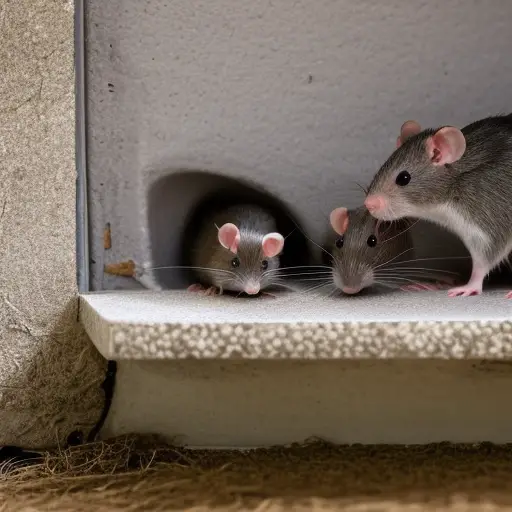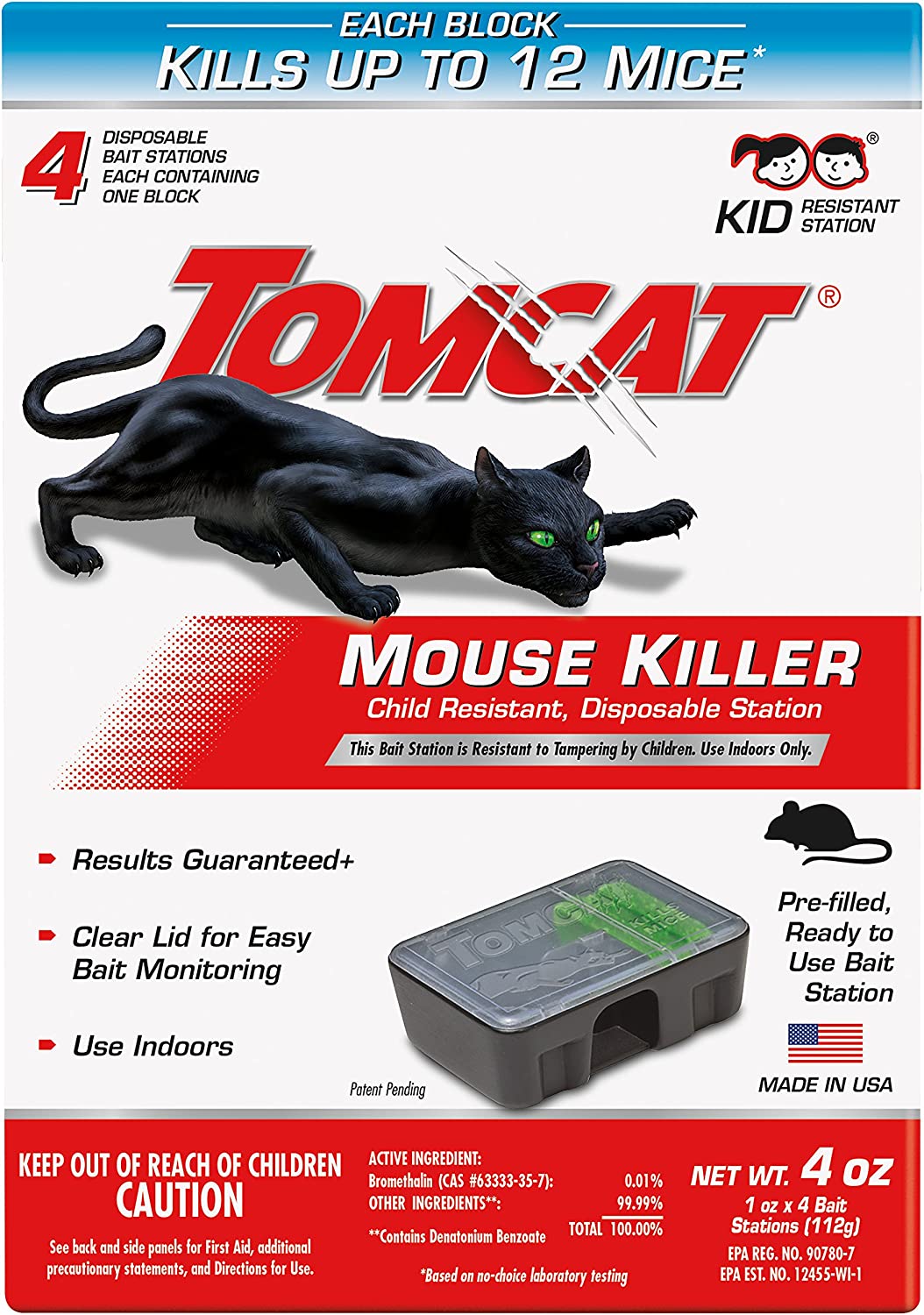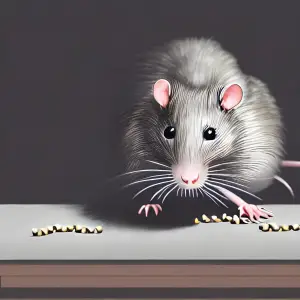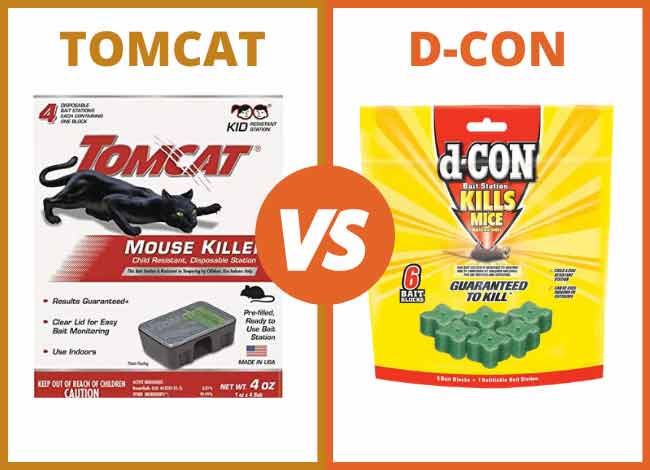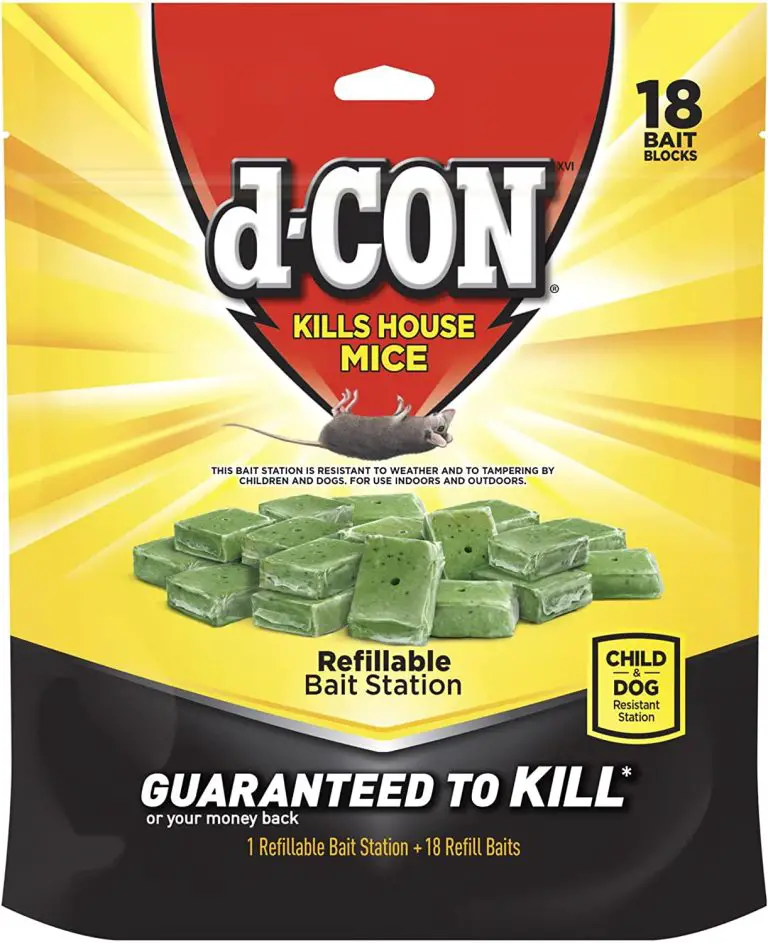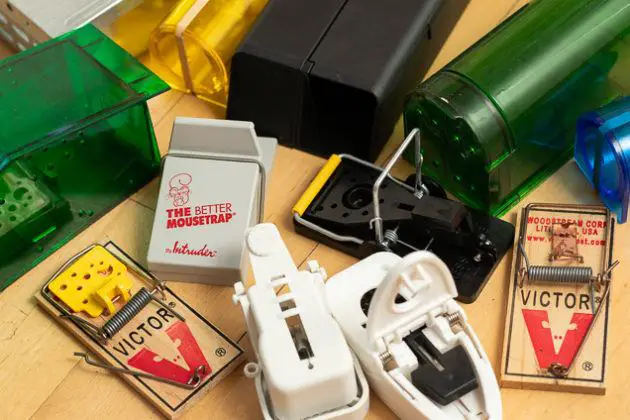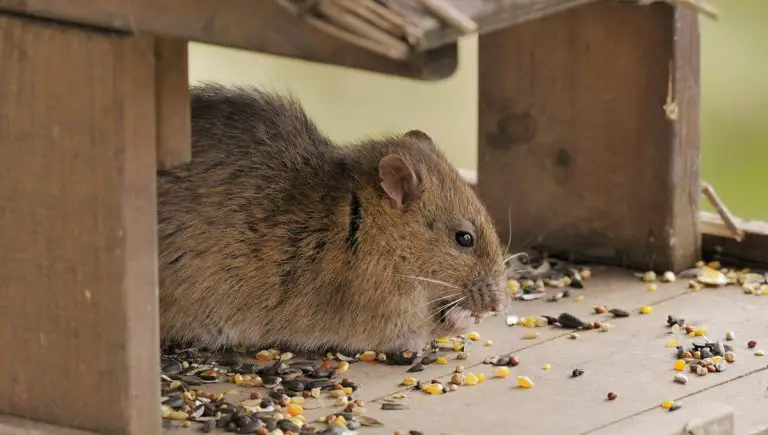How to Prevent Rats from Entering Your Home
Rats can be a nuisance, as they are capable of wreaking havoc on homes and properties. It is important to take the necessary steps in order to prevent rats from entering one’s home.
This article will provide an overview of some techniques that homeowners can use in order to protect their property from unwanted rat infestations. For more tips and for some home remedies please check out our other post on this topic.
Rats have been known to cause significant damage and disruption when inside a living space; this includes chewed wires and insulation, contamination of food supplies, and spread of diseases through their droppings.
Additionally, rats may also lead to psychological distress for those who encounter them within their own environment. Thus, it is essential that effective measures are taken in order to ensure such pests do not enter one’s home or property.
Potential Entry Points
Rats can enter a home through very small openings, so it is important to be aware of potential entry points.
Rats can squeeze through holes as small as ¼ inch, which means that any unsealed cracks or crevices should be sealed with materials such as steel wool, hardware cloth, and caulk.
Rats are opportunistic animals that can squeeze through holes as small as a quarter. It’s important to identify and seal any possible entry points to prevent rats from infesting your home or property. Here are some common entry points to be aware of:
- Holes in walls or flooring
- Cracks in windows and doors
- Cluttered or unsecured garages
- Vents and ventilators
- Gaps in roofing and foundations
- Pipes and plumbing fixtures
Rats can climb walls, making ventilators and attic vents potential entry points. Also, they can enter through damaged pipes and plumbing fixtures. It’s important to inspect your property and seal all potential entry points.
Other common entry points for rats include foundation vents and chimneys without caps, spaces around electrical wiring or water pipes entering the house, and gaps under doors.
Additionally, missing roof tiles or shingles may provide easy access into attics.
To help prevent these issues from occurring in the first place, regular inspections are recommended to identify and seal up any likely areas where rodents might gain access to your property.
In addition to this preventive measure, maintaining good sanitation standards inside and outside of the home helps discourage rats from taking up residence near your living space.
Keeping food stored properly in airtight containers also minimizes the chances of attracting unwanted guests.
Inspecting The Exterior Of The Home
Previous section discussed potential points of entry for rats into a home. It is vital to inspect the exterior of the home in order to identify and address any existing or potential issues that could allow rodents access.
Inspecting the outside of a dwelling includes checking walls, foundations, doors, windows and other openings for holes or gaps where pests can enter. If there are any major structural flaws, they should be repaired as soon as possible.
Additionally, it is important to ensure all window screens fit properly and have no tears or rips; screen vents must also remain closed at all times. It is still possible for small animals like mice and rats to squeeze through even very tiny cracks if left unchecked.
Furthermore, debris such as wood piles and leaf litter should be kept away from the perimeter of homes since these provide perfect hiding places for rodents seeking shelter near food sources. All garbage cans within 100 feet of your property should also be secured with tight fitting lids to prevent scavenging by pests.
Taking these steps will help reduce rodent infestations around the house before they start.
Sealing Gaps And Holes
Rats are known to enter homes through gaps and holes, making it essential for homeowners to assess their property for possible points of entry.
When assessing the home, look for any cracks or crevices around windows, doors and other access points that may lead directly into the house.
Pay special attention to areas in which pipes and wires enter outside walls as rats can squeeze through surprisingly small openings.
Once potential entry points have been identified, they should be sealed using a heavy-duty material such as steel wool or caulk.
It is important that the seals used are thick enough so that even if a rat manages to chew through them, its body will not fit through the opening.
If necessary, mesh screens can also be used on vents and chimneys to prevent rodent incursions.
To keep rats out of your home or property, it’s important to seal all the potential entry points effectively by taking the following steps:
1. Seal all holes and gaps in walls, roofing, and foundations with caulk or concrete
Rats can easily enter through even small holes, so it’s important to seal all gaps and cracks in your walls, roofing, and foundations to prevent entry. Use a durable sealant like caulk or concrete to plug any gaps, ensuring that they are completely filled.
2. Install door sweeps and weather stripping to prevent rats from entering through doors and windows
Install door sweeps and weather stripping to seal the gap between the door and the floor or the window and its frame. These simple solutions can help deter rats from entering through common entry points.
3. Add screens and caps to ventilators and attic vents to prevent rats from climbing in
Ventilators and attic vents are potential entry points for rats, so it’s important to ensure that they are properly screened or capped. Use a metal mesh screen to cover these entry points, ensuring that the mesh is small enough to prevent rats from squeezing through.
4. Repair and replace damaged pipes and plumbing fixtures to prevent rats from entering
Pipes and plumbing fixtures can provide a pathway for rats to enter your property. Regularly inspect the pipes and fixtures for signs of damage, and repair or replace them as needed to prevent entry points for rats.
5. Use mesh wire to seal small gaps and openings around pipes and cables
For smaller gaps around pipes and cables, use a wire mesh to seal them. This wire mesh can be easily installed with caulking or other sealant, and it will prevent rats from squeezing through these smaller gaps.
By taking these effective sealing methods, you can keep rats out of your property and reduce the risk of infestations or other problems associated with these pests.
Eliminating Attractive Nuisances
The presence of rats in and around your home can be a serious health hazard. To effectively prevent them from entering, it is essential to eliminate any attractive nuisances that may serve as an invitation for these rodents:
- Rat-proofing the exterior of your property by sealing off access points such as gaps in walls or foundations, broken windows and holes near utility lines;
- Keeping food sources inaccessible; this includes properly storing pet food, preventing bird feeders from spilling onto the ground, ensuring garbage containers are sealed tightly and regularly disposing of compost waste;
- Removing potential nesting materials such as wood piles and stacks of debris around the perimeter of your home;
- Monitoring standing water on roofs and gutters to ensure they remain clear.
By taking preventive measures to make sure your living space does not become appealing to rats, you can help protect yourself, family members and pets from exposure to rat-borne diseases. Eliminating possible attractions will also discourage infestations before they start and reduce their likelihood of returning in the future.
Traps And Baits
When it comes to preventing rats from entering a home, traps and baits are two of the most effective methods. Trapping is an especially useful option for those looking for a non-chemical solution as there are many humane options available in today’s market.
The type of trap used depends on the size and location of the infestation, as well as the preferences of the homeowner. Rat snap traps can be placed near areas where rat activity has been seen while live capture cages are ideal for trapping more than one rodent at once.
Baiting involves luring rodents with food or other attractants in order to kill them. The bait used should also match the infestation; when dealing with larger species such as Norway rats, stronger smelling bait like peanut butter may work better compared to cheese which works best for smaller species such as mice. Additionally, poison bait blocks or pellets should only be used if all other options have failed due to their toxicity levels and potential risks associated with use around children and pets.
It is important to remember that no single method will completely prevent rats from entering your home – a combination of different control techniques such as exclusion proofing, sanitation measures, and habitat modification may provide greater success in keeping these pests away from your property.
Repellents
Keeping rats out of your home can be a challenging process. Implementing repellents is one effective strategy that should not be overlooked.
Repellents are substances or devices used to drive away unwanted pests from an area by creating an uncomfortable environment for them, thereby encouraging them to leave the premises without killing them in the process.
When it comes to rat repellents, there are several options available on the market today. Some common examples include sound and light producing devices, chemical sprays, traps, predator urine products, and natural plant-based extracts such as peppermint oil or garlic juice.
Depending on your specific needs and situation, selecting the most suitable product may require some research and experimentation before finding what works best for you.
It is important to remember that while repellents can help keep rats away from your property, they do not guarantee complete protection against future infestations. Additional precautionary measures such as reducing clutter around the house and sealing off any possible entry points will also need to be taken in order to ensure long-term control of these pesky rodents.
Summary of Rat Prevention Methods
| Prevention Method | Description |
|---|---|
| Seal Entry Points | Rats can squeeze through very small holes, so seal all gaps and holes in the foundation, walls, and roof with wire mesh or cement. Also, make sure doors and windows are sealed tightly. |
| Secure Food | Store food in airtight containers, and clean up any spills or crumbs immediately. Don’t leave pet food out overnight. |
| Remove Clutter | Rats like to hide in clutter, so keep your home tidy and free of piles of paper or clothing. |
| Keep Trash Sealed | Secure garbage cans with tight-fitting lids, and remove trash regularly. |
| Trim Trees and Shrubs | Rats can use trees and shrubs to climb onto your roof or enter your home through holes or vents. Keep them trimmed back away from your home. |
| Use Rat Deterrents | Use rat deterrents such as peppermint oil, ammonia, or mothballs in areas where rats are likely to enter. |
| Set Traps | Set snap traps or live traps in areas where rats have been seen. Check traps regularly and dispose of dead rats promptly. |
| Hire a Professional | If you have a serious rat infestation, consider hiring a professional pest control service to help eliminate the problem. |
Professional Exclusion Services
Exclusion services are the most effective way to keep rats away from your home. It is important that exclusion be done correctly, as improper techniques can cause more problems than they solve.
Here are five tips for successful exclusion:
- Start with a thorough inspection of all potential access points – this includes checking around doors, windows and any other openings into your home.
- Make sure there are no gaps or cracks where rat entry could occur by caulking and sealing them up.
- Use steel wool or copper mesh in areas where it would be difficult to caulk or seal off an area completely.
- Install door sweeps on all exterior doors to ensure that rats cannot enter through small spaces at the bottom of the door.
- Consider using one-way gates (also known as excluders) which allow rats out but prevent them from entering again.
How To Determine If Rats Are In Your Home
Rats can be a nuisance in any home, but they don’t have to be. With the right preventive measures, you can keep rats away from your living space and ensure that your home stays rat-free.
The first step is to determine if there are already rats in your home. This could involve noticing signs such as droppings or gnaw marks on furniture and walls, seeing tracks on dusty surfaces, hearing squeaking noises coming from inside walls or other hiding places, or smelling an ammonia-like odor which is common with large infestations of rodents.
If you do find evidence of rats in your home, it’s important to take immediate action to remove them before the problem worsens.
John’s Story
John had just moved into his new home and was excited to start his new life. However, he soon discovered that he had a big problem – rats were entering his home.
At first, John tried to ignore the problem, thinking that the rats would go away on their own. But they only seemed to be getting worse. They were chewing through his food containers, leaving droppings everywhere, and making loud noises at night that kept him awake.
John knew he had to do something about the rat problem, but he wasn’t sure where to start. He tried setting traps, but they didn’t seem to work. He even tried using rat poison, but that only seemed to make the problem worse.
Finally, John decided to call in the professionals. He hired a pest control company to come in and assess the situation. The pest control experts quickly identified the entry points that the rats were using to get into John’s home. They then sealed up all the gaps and holes in the foundation, walls, and roof with wire mesh and cement.
Thanks to the pest control experts, John’s rat problem was finally solved. He could sleep peacefully at night, knowing that his home was free of unwanted guests. From that day forward, John made sure to take the necessary precautions to prevent rats from entering his home again.
Signs of a Rat Infestation and When to Call for Professional Help
If you suspect a rat infestation in your home or property, it’s important to take action immediately to avoid further damage and health risks. Here are some signs to look for:
- Droppings and urine stains are a clear sign of a rat infestation and can usually be found near their hiding places and feeding areas.
- Evidence of gnawing on wood, electrical wires, or food packaging is another sign to look for. Rats have strong teeth and will gnaw on anything to keep them sharp and trimmed.
- Sighting of live or dead rats in and around your building is a strong indicator of infestation, especially during daytime when rats are less active.
- If you notice unexplained noises or smells in your home, it could also be a sign of rats. They are nocturnal creatures and usually make noise at night.
If you suspect a rat infestation, it’s best to call a pest control professional to handle the problem. Rats can reproduce quickly and a small infestation can quickly become a serious problem. A professional pest control service will be able to identify the extent of the infestation and provide effective treatment and prevention measures.
Frequently Asked Questions
What Type Of Bait Should Be Used To Trap Rats?
When it comes to trapping rats, the type of bait used is an important factor in determining success.
The best types of baits are those that have a high protein content and are highly attractive to rodents such as sunflower seeds, peanut butter, nuts, dried fruits, bacon and cheese.
Of course, these baits must be placed in traps where they will not be accessible to children or pets.
Additionally, when setting out multiple traps at once for maximum effectiveness, it is also advised to vary the types of bait used so that weary rats do not become too accustomed to any single food source.
Is There A Natural Repellent That Keeps Rats Away?
Natural repellents are often used to deter rodents, such as rats, from entering homes. Pest control experts have noted that some natural ingredients can be effective in discouraging these pests when spread around the exterior of the home.
Common ingredients suggested for use include peppermint oil, garlic and cayenne pepper. Additionally, products containing castor oil or ammonia may also work to repel rats from your property.
Ultimately, combining multiple options is likely the best way to keep rats at bay.
How Can I Tell The Difference Between A Rat And A Mouse?
It is important to be able to tell the difference between a rat and a mouse, as their behaviour differs greatly.
Mice are small rodents that measure up to 10 cm long with large ears and eyes in comparison to their body size.
On the other hand, rats tend to be larger than mice at around 20 cm long; they have smaller ears and eyes relative to their body size.
Rats also tend to have thicker tails which can help differentiate them from mice.
Knowing how to identify each will enable you to make an informed decision on what pest control measures need taking so that you can protect your home from both rodent species effectively.
Is There A Safe Way To Get Rid Of Rats?
When it comes to getting rid of rats, safety is paramount.
While there are various methods available for eliminating these pests from your home, some may not be safe or effective.
Traps and poisons can certainly help reduce rat populations, but they should only be used as a last resort since improper use can cause more harm than good.
Professional pest control services offer long-term solutions that will effectively eliminate rodent infestations while keeping you, your family, and pets safe.
How Often Should I Inspect My Home For Signs Of Rat Activity?
Regular inspections are a key part of preventing rat infestations. To ensure your home remains free from rats, inspect it at least once every two months for signs of rat activity.
Look for burrows around the foundation or near trees, chew marks on doors or wires, droppings in dark and secluded areas, and gnawing sounds coming from walls or attics.
If you find evidence of any of these activities, contact a pest control expert immediately to discuss potential solutions to keep rats away before they become an even bigger problem.
Conclusion
Rats can be incredibly destructive, and it is important to take steps to prevent them from entering your home.
There are several methods that can help keep rats away, such as using bait traps with a suitable food source for the rodents.
Natural repellents may also prove effective at deterring rat infestations, but these may not provide long-term prevention against the pests.
Additionally, it is important to understand the difference between a mouse and a rat; this will allow you to identify any signs of an infestation early on in order to take more immediate action.
Once your home has been invaded by rats, it is still possible to get rid of them safely and effectively.
Professional pest control services should always be consulted before taking any form of eradication measure into one’s own hands due to potential risks associated with poisonous baits or homeowner extermination attempts.
Regular inspections around the property are essential in detecting signs of rodent activity so preventive measures can be taken if necessary.
In conclusion, preventing rat infestations in homes requires knowledge and vigilance.
It is critical to use bait traps containing appropriate food sources and implement natural repellents where applicable.
Distinguishing between rats and mice helps determine when regular inspections need to occur around the premises.
If an infestation does exist, professional assistance should be sought out instead of attempting DIY solutions as they could potentially cause harm or injury.
